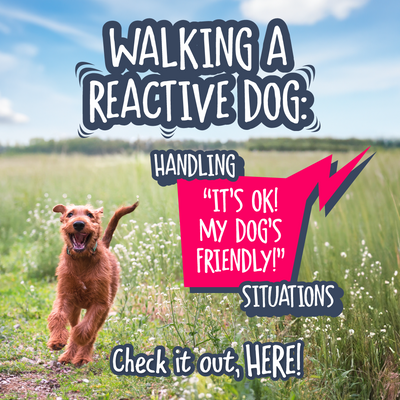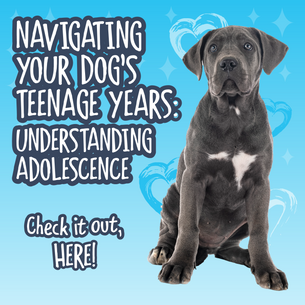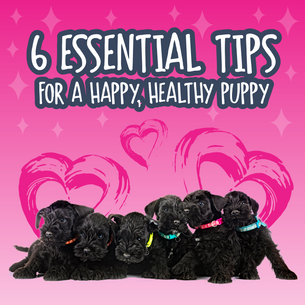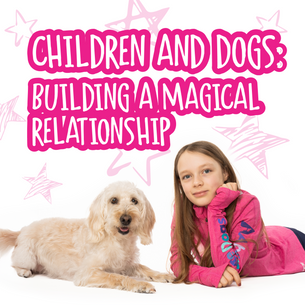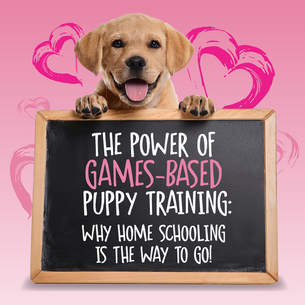Take a moment and picture this…
You’re out taking a walk on a lovely summer’s day, enjoying the peace and quiet and tranquillity. This is your “me” time. That one all-too-brief point of day you really look forward to. Your chance to breathe, and recharge, and take a few precious moments to yourself.
Now imagine this. As you wander along, minding your own business, you suddenly find yourself being embraced by a complete stranger with a familiarity that throws you off balance. You stiffen and pull away. At first, you’re just confused, so you take a step back with your hand up in an effort to protect yourself… Maybe they thought you were someone else. Yet despite your clear signals that you’re feeling very uncomfortable, they come back in for another hug!
“Hey, I don’t like hugs,” you manage before extracting yourself and moving quickly away…
“Don’t be silly! I was just being friendly!” they reply, clearly affronted by your reaction to their overly enthusiastic greeting.
Wow! That was really weird, right? And very uncomfortable! What on earth were they thinking?
You keep walking, trying to shake off the tension that has suddenly entered your body and re-find that peaceful equilibrium - and BAM! It happens again! Another random stranger bounds up to you and pulls you in for an unwelcome hug.
What is this? What’s going on?
Well, this is the world that we often expect our dogs to navigate, or find ourselves having to navigate with our dogs, despite our very best efforts to safeguard their experiences.
Understanding Reactive Dog Behaviour
“It’s OK! My dog’s friendly!”
If you own a fearful or reactive dog, those words - which are often shouted from afar as an overly enthusiastic dog comes bounding towards yours - can fill you with utter dread.
Perhaps your dog isn’t friendly, or doesn’t appreciate having their space invaded, or has a painful condition that makes exuberant play uncomfortable.
Equally, you might be training, or working really hard to teach your dog that the distractions of the world are none of their business.
Your dog might be nervous of new environments and you’re playing games to build up their confidence.
There are so many reasons your dog might be reactive or aggressive on walks. We dive into them in our podcast episode Reactive and Aggressive Dogs: Expert Advice for Practical Prevention.
Dogs, just like humans, are a social species, and yet, just like people, dogs have varying degrees of willingness to interact, especially with those that they don’t know. Dogs are hardwired to understand the sequence of events that form an appropriate interaction. It’s not something we need to teach them. You can read about this interaction chain in our blog: Help! My Dog Doesn’t Like Other Dogs.
And yet not every dog has the skills to handle those conversations appropriately. If either dog is missing one of those key skills, those interactions become awkward or inappropriate.
Optimism, disengagement, and the ability to pitch their arousal appropriately are all vital for your dog to be able to have those polite, balanced conversations, and progress seamlessly through the interaction chain. A lack of any one of those skills can mean a dog will struggle to interact appropriately. Put two dogs together who are both lacking skills, and the conversation can become even more challenging.
Strategies for Handling “It's OK! My Dog's Friendly!” Encounters
One of the hardest situations to know how to navigate if you’re walking a reactive dog is other “friendly” dogs who come bounding up uninvited, or whose owners try to insist on allowing their dog to greet yours.
If you have a dog who is uncomfortable interacting with other dogs, being on the receiving end of those “he’s friendly” scenarios can fill you with fear.
We love to train FOR the situation. Games like Giving into Leash Pressure, A to B and Middle, that you’ll find in our Games Club, can all come in handy when you want to get your dog out of situations they are going to struggle with or protect them from interactions they are going to find worrying.
But what about your own reactions in those stressful moments?
It can be tempting to become frustrated at the other owner’s ignorance or thoughtlessness, and yet it is infinitely more helpful to focus on what you can control, have strategies which will allow you to feel capable in the moment, and be ready with options to de-escalate the situation and encourage the other dog to move on.
Check out our super tips for safeguarding your dog’s experiences around other dogs who invade their space on walks.
TOP TIP 1: ADVOCATE FOR YOUR DOG
Being your dog’s best advocate is often about saying no to situations you know they won’t enjoy, might not go well, or that they don’t currently have the skills to manage.
When confronted with "It's OK! My dog's friendly!" consider these polite yet firm responses:
“I’m sorry, my dog won’t enjoy that experience.”
“We’re practising being calm around other dogs / people.”
“My dog would actually prefer some space.”
It can be so helpful to have a response prepared in advance, so you’re ready to advocate for your dog. Practise them at home so they are second nature, and you’ll find it much easier, even if the situation feels awkward or uncomfortable.
TOP TIP 2: MAKE YOUR DOG NONE OF THAT DOG’S BUSINESS!
Dogs who find interactions with other dogs challenging often struggle with the skill of disengagement. If your dog stands rooted to the spot, staring at the approaching dog, an interaction is much more likely to happen than if you are able to calmly employ your dog in something that is not going to excite the other dog, and which gives a clear message that you and your dog are none of that other dog’s business.
You might ask your dog to come into Middle and then turn your dog away from the approaching dog while calmly asking the other owner to pop their dog on lead.
You might simply turn your dog towards you and move them away from the approaching dog using a game we call Rewind, feeding them close to your body to keep them engaged with you and limiting their opportunity to react outwards or give mixed signals to the other dog (“I want to play, ooohhh no I don’t!”).
Crouching down, taking a gentle hold of your dog’s collar or harness and feeding them on the ground between your feet can be a brilliant way of keeping their attention away from the other dog - and it’s a great one to practise lots for the situation in case you need to use it in the situation.
Learn all these super strategies and so many more in our Engage Disengage digital course.
TOP TIP 3: TEACH YOUR DOG BOUNDARY GAMES
Being ready to hop your dog up onto a boundary (rock, tree stump, bench) can get them out of harm’s way while an incoming dog is diverted.
New to Boundary Games? Dive into the free Absolute Dogs Boundary Games eBook for a step-by-step guide to teaching this super skill.
TOP TIP 4: CREATE SPACE AND DISTANCE
Depending on where you’re walking, give approaching dogs a wide berth to limit opportunities for unsolicited interactions.
Throwing a handful of food towards the approaching dog can also give you time to get your own dog out of the situation.
If your dog has the right skills, sending them for a swim if you happen to be near water can be a great way of avoiding an interaction too, as it’s much less likely the approaching dog will follow them into the water and continue to interact or try to engage them in play.
TOP TIP 5: BE AWARE OF WHAT THE LEAD COMMUNICATES
If your dog is walking on lead, be really mindful of the tension that you can communicate down that lead as a result of your own reactions to the situation.
It’s also worth keeping in mind that the lead restricts your own dog’s ability to move away from a situation they are finding challenging, and can add frustration or fear.
While your dog should be able to enjoy a walk without being approached by other dogs, it’s still worth being aware of the messages you can unintentionally communicate down the lead.
Build your own confidence to handle walks, as well as growing your dog’s skills, with the games and strategies in our Absolute Confidence digital course.
As your dog becomes more confident, you’ll find you become much more confident as an owner too!
TOP TIP 6: MOVEMENT ADDS AROUSAL
It’s important to be aware that movement adds arousal, so in some situations it might be more appropriate to ask your dog for a still, calm behaviour such as a down.
In fact, calmness is a vital skill for every dog to embrace, and one we often refer to as the “king” of all concepts.
TOP TIP 7: CHOOSE YOUR ENVIRONMENT WISELY
It’s also worth considering whether your choice of walking location is setting your dog up for success.
If you’re regularly walking on narrow paths where it’s hard to create space and distance, or in locations where other dogs are typically off-lead, it’s much more likely that your dog is going to find themselves in situations they don’t currently have the skills to handle.
Your walks will be much more enjoyable for you and your dog if unsolicited interactions are unlikely to happen.
TOP TIP 8: CONSIDER DITCHING THE WALKS
Of course, if you and your dog are both finding walks stressful, taking a break from those stressful walks while you grow your dog’s skills can be the very best option.
Ditching the Walk can offer a really valuable long-term investment in your dog’s overall training and behaviour - and in your relationship.
Listen in as we share our thoughts on ditching those stressful walks in our podcast episode The Benefits of Ditching Daily Walks with Your Dog. It might just change how you think about your dog's walks, training, exercise and mental wellness!
Why “It's OK! My Dog's Friendly!” Is Not Always OK
Maybe you’re reading this as the owner of that friendly dog who just wants to greet other dogs and make friends. Part of your dog owning dream might be for your dog to enjoy the company of other dogs on walks. It’s a dream we can understand. You almost certainly have the very best of intentions.
And yet for some dogs, just like some people, it isn’t their dream.
You may have been told it’s important to “socialise” your dog and allow them to interact with other dogs. Perhaps the advice you’ve been given even goes as far as to suggest it’s OK for your dog to be put in their place or “told off” by other dogs as a way to learn better manners.
Of course, even if this were to be an effective way for your dog to learn, it's just not fair on the reactive dog to be put in that position. And the reality is your dog is more likely to have a bad experience than a good one if they try and make friends with a dog-reactive dog who doesn’t have the skills to handle that interaction. We talk about the lasting impact of “one bad experience” in our blog Help! My Dog Doesn’t Like Other Dogs.
So how can you be more understanding of those dogs and owners who do struggle?
What would those reactive dog owners love every non-reactive dog owner to keep in mind?
Here are some top tips to consider before you head out and about with your dog:
TOP TIP 1: RESPECT THE REQUEST
If someone asks you to pop your dog back on lead, give their dog some space or call your dog away, they aren’t doing it to cause offence, to be rude or unfriendly.
Every dog is entitled to have their personal space respected - and it will safeguard your dog from the possibility of a bad experience too!
No owner should be made to feel at fault for having a reactive dog and for doing their very best to keep that dog safe and under control.
Recognise that a dog and owner might be having a really hard time, and may already be feeling vulnerable or embarrassed.
Respect their space and avoid making judgments based on what you’re observing from a distance. Unless you’ve walked in that person’s shoes, you really don’t know what they’re dealing with.
TOP TIP 2: ASSESS YOUR OWN DOG’S SKILLS
Before you consider letting your dog approach another dog, ask yourself these questions:
- Could I call my dog back if I needed to, even once they were interacting with the other dog?
- Have I checked that the other owner is OK with my dog approaching theirs?
- Does my dog have all the skills to have an appropriate interaction with another dog, even if that dog isn’t quite as skilled?
- Is this interaction going to help my dog learn what I’d like them to learn?
TOP TIP 3: GROW YOUR DOG’S SKILLS
Teach your dog that other dogs are none of their business. When you head out together, your dog’s focus should be on you, not on other dogs - even if your dog is the friendliest of dogs.
Remember that not every dog will want to interact with yours, and you could be setting your dog up for a bad experience if the other dog is worried or fearful. If your dog expects to greet every dog they see, that anticipation and excitement can quickly become frustration if they are prevented from interacting - and frustration can lead to fear.
TOP TIP 4: WALK WITH CONSIDERATION FOR OTHERS
Make sure your dog is on lead if you’re walking somewhere dogs are meant to be kept on a lead. Even if you know for sure your dog won’t approach another dog, the owner of the reactive dog who has deliberately picked that spot doesn’t know that, and you’ve immediately made their walk so much more stressful than it needed to be.
TOP TIP 5: AVOID JANGLING DOG TAGS
Jangling dog tags make your dog way more vulnerable, and can be a huge trigger for reactive dogs who hear them and predict an interaction they aren’t equipped to deal with. Safeguard your own dog and avoid creating unnecessary stress for others by using tags that sit flush to your dog’s collar or harness.
TOP TIP 6: KEEP YOUR DOG MOVING
Don’t allow your dog to stare at another dog. This can create huge amounts of anxiety for a dog who is already worried about interactions with other dogs - and can make it much harder for them to enjoy their walk in peace, or move on by without reacting.
TOP TIP 7: UNDERSTANDING AND COMPASSION
A word of encouragement goes a really long way.
See the dog, not the behaviour. Remember that a reactive dog is not giving their owner a hard time - they are having a hard time.
There is hope!
If you have a reactive dog, situations that feel out of your control can be tear-inducing… But we want you to know there is hope.
Through games, you can reshape your dog’s brain and they can learn how to properly respond (or to disengage completely from worrisome events and give you their 100%, undivided attention).
There’s hope for the friendly dog to practise a more appropriate chain of interaction, where he understands when a dog needs space!
And there’s hope for the dog that needs space to disengage and realise they’re okay!
You’ve got their back.
How? Check out all the expert-led courses in our "Your Reactive Dog Solutions" range which offer effective games-based training, tailored to the needs of reactive dogs and their dedicated owners.
